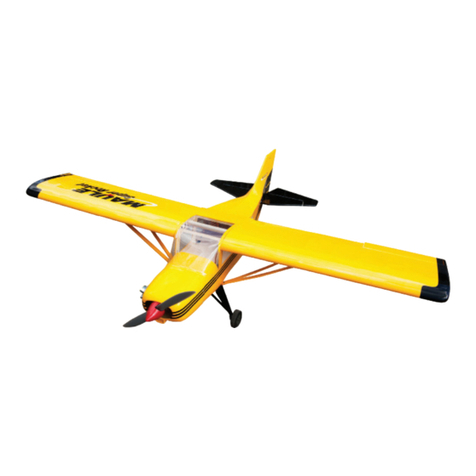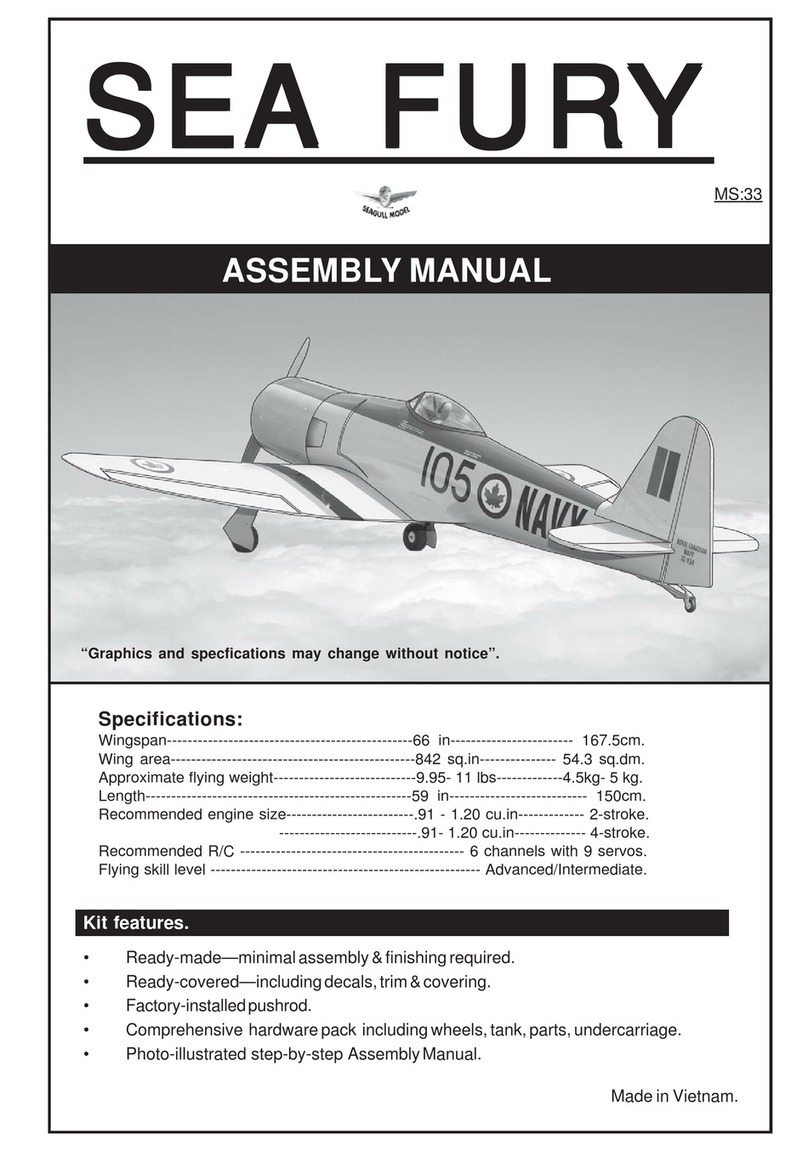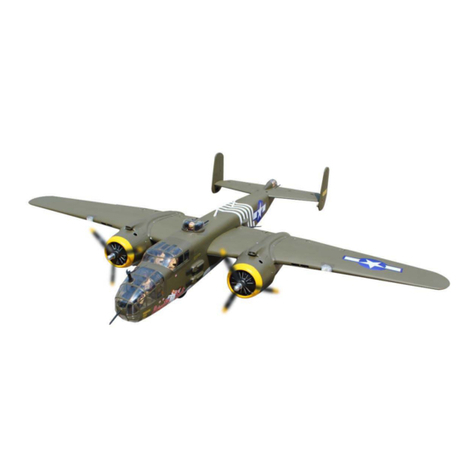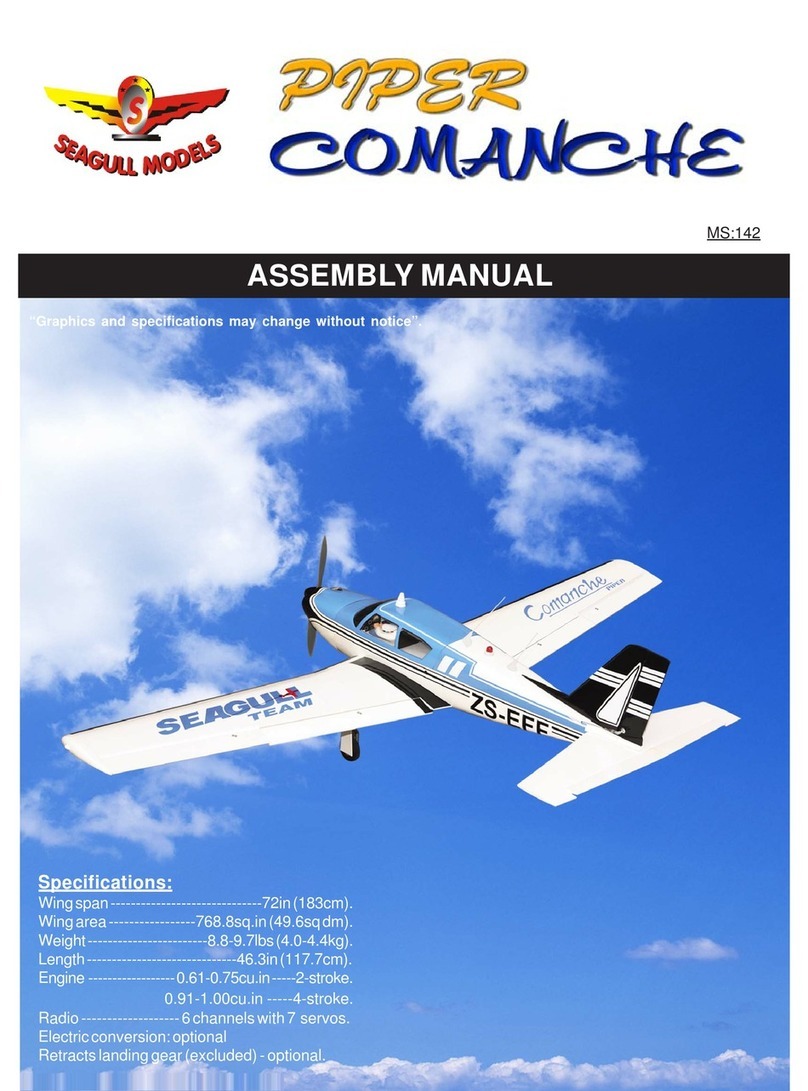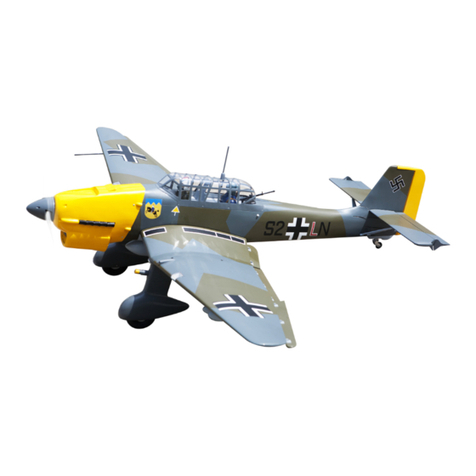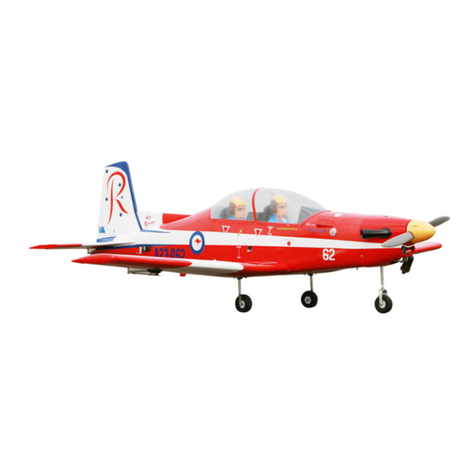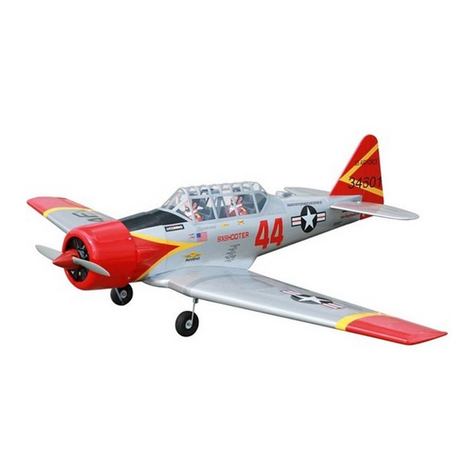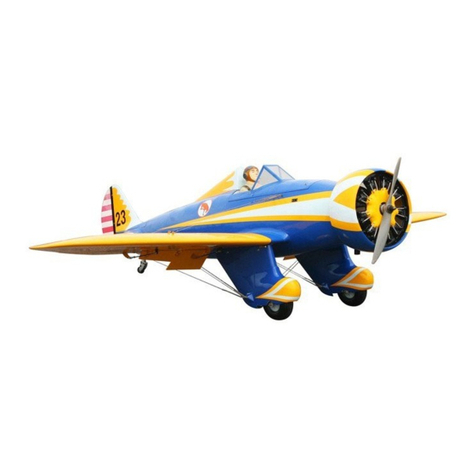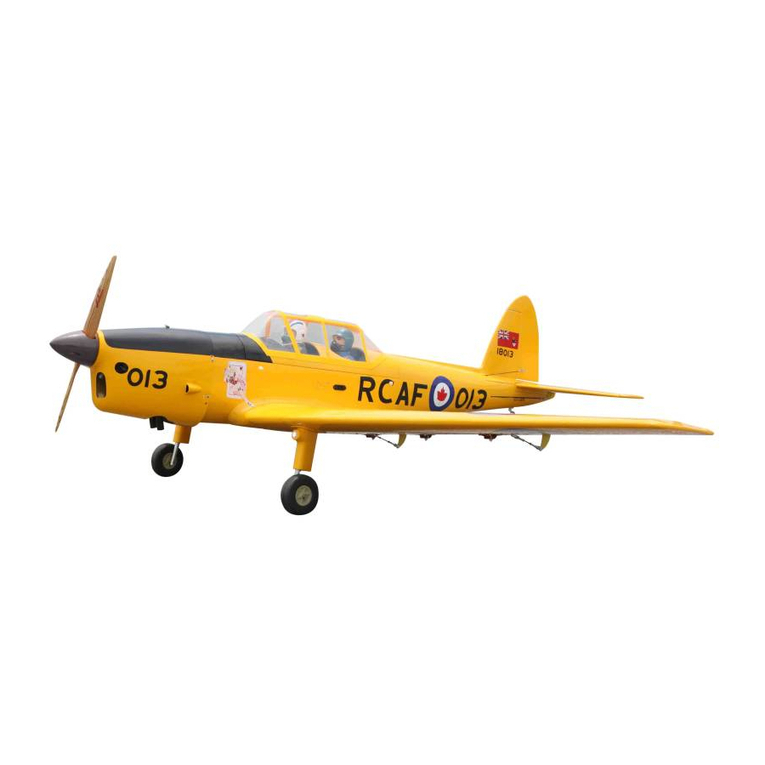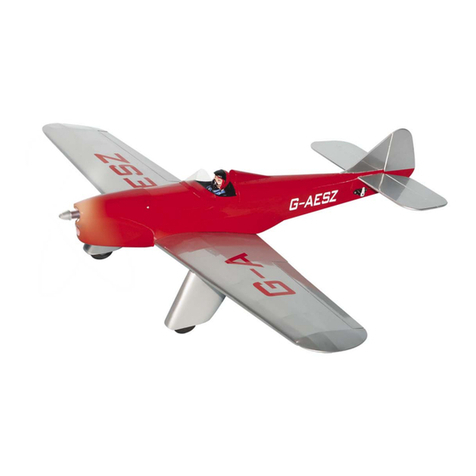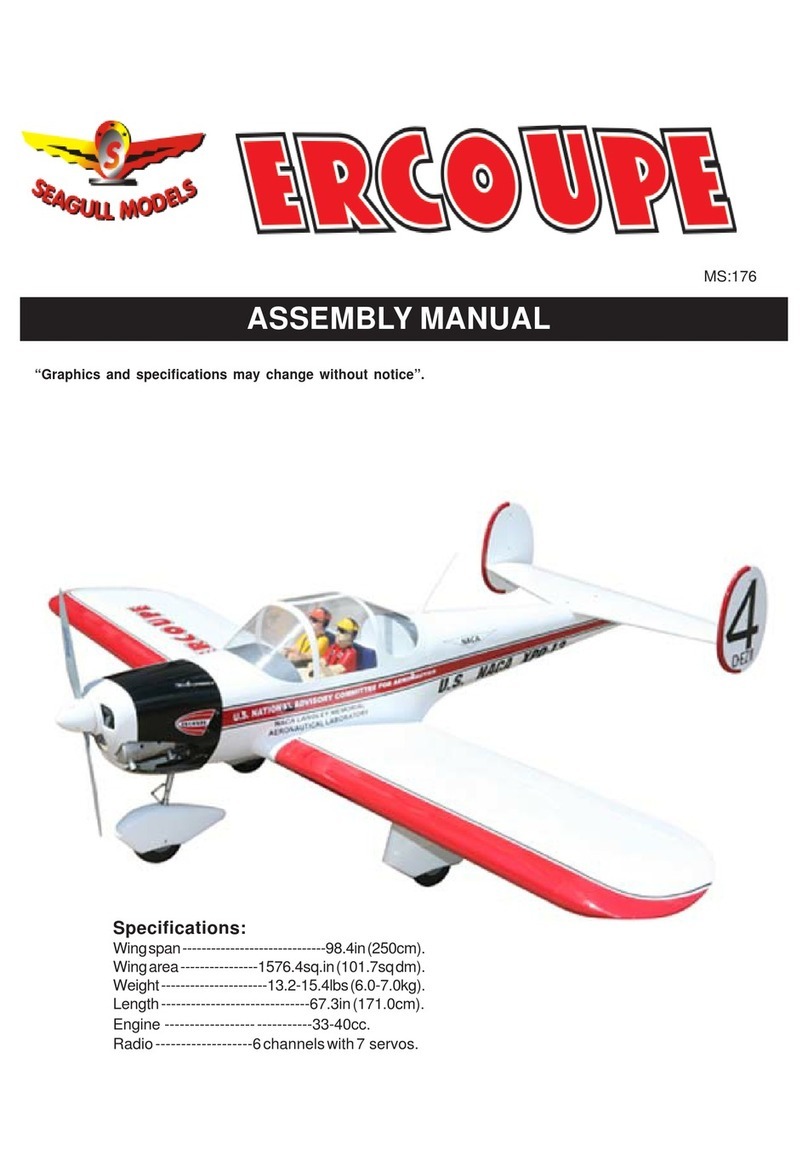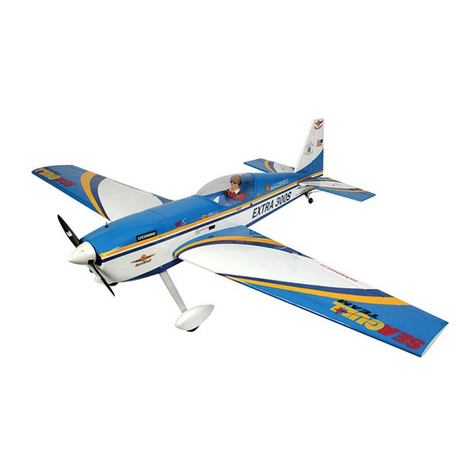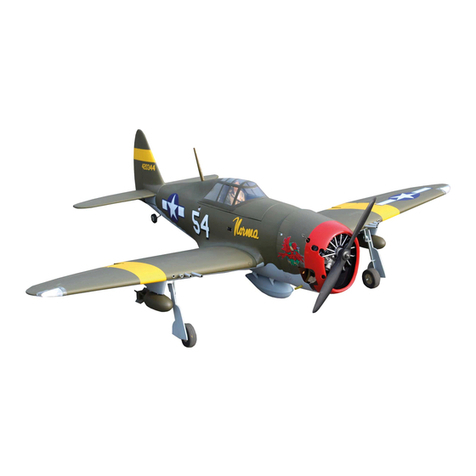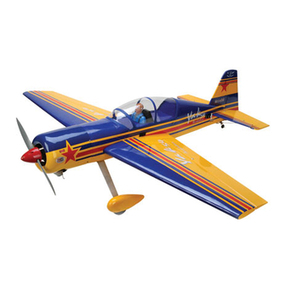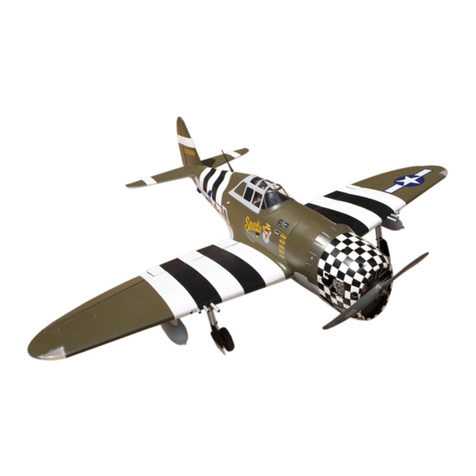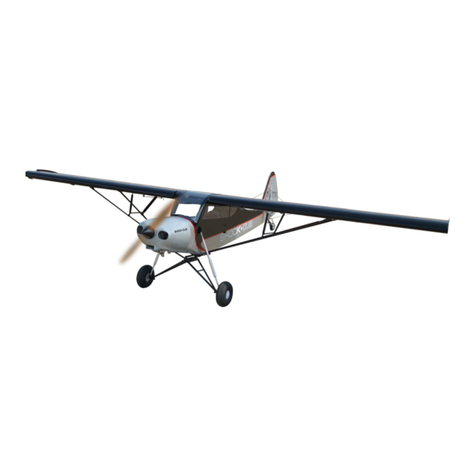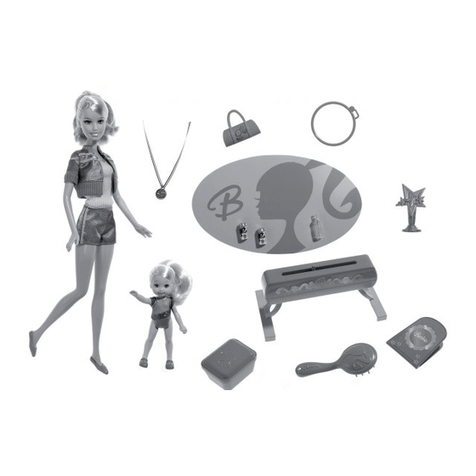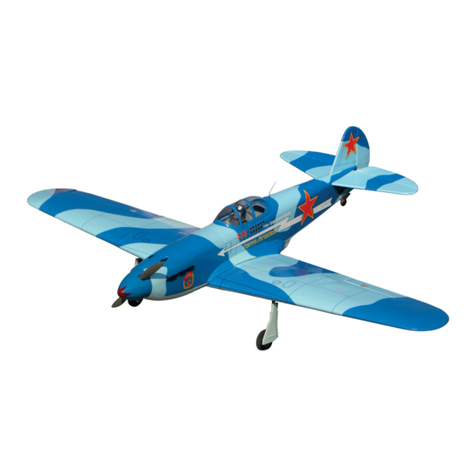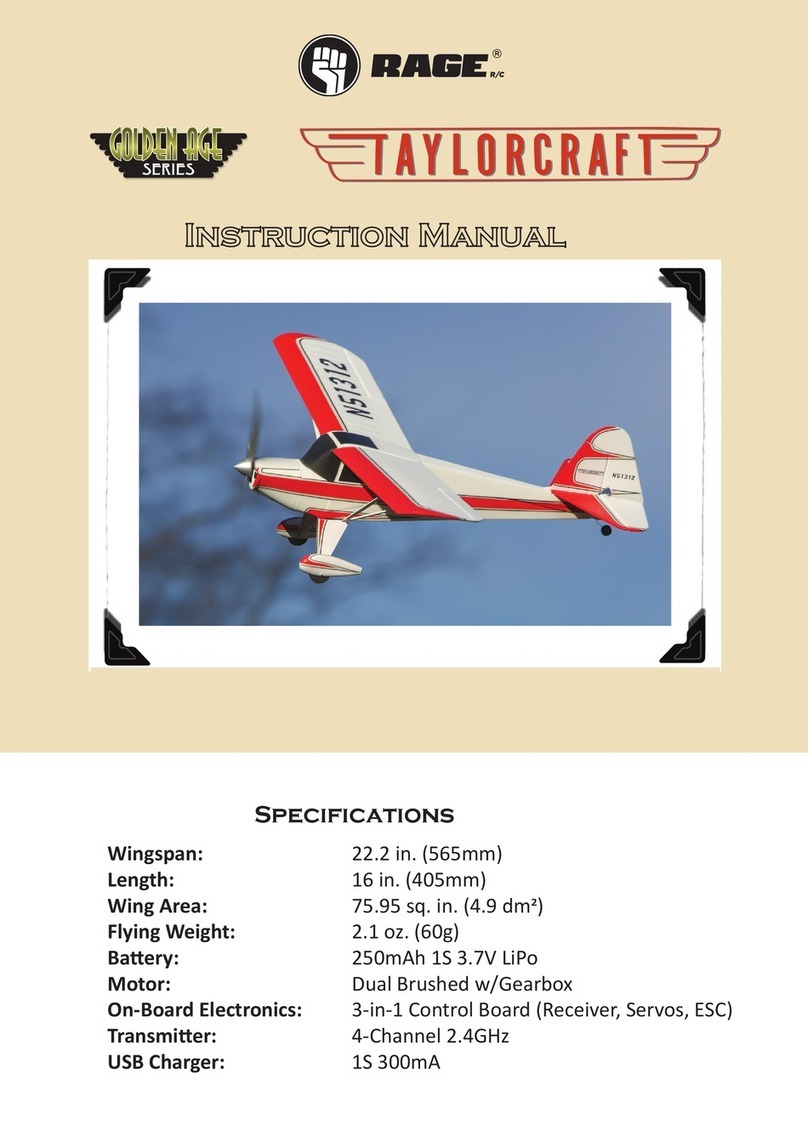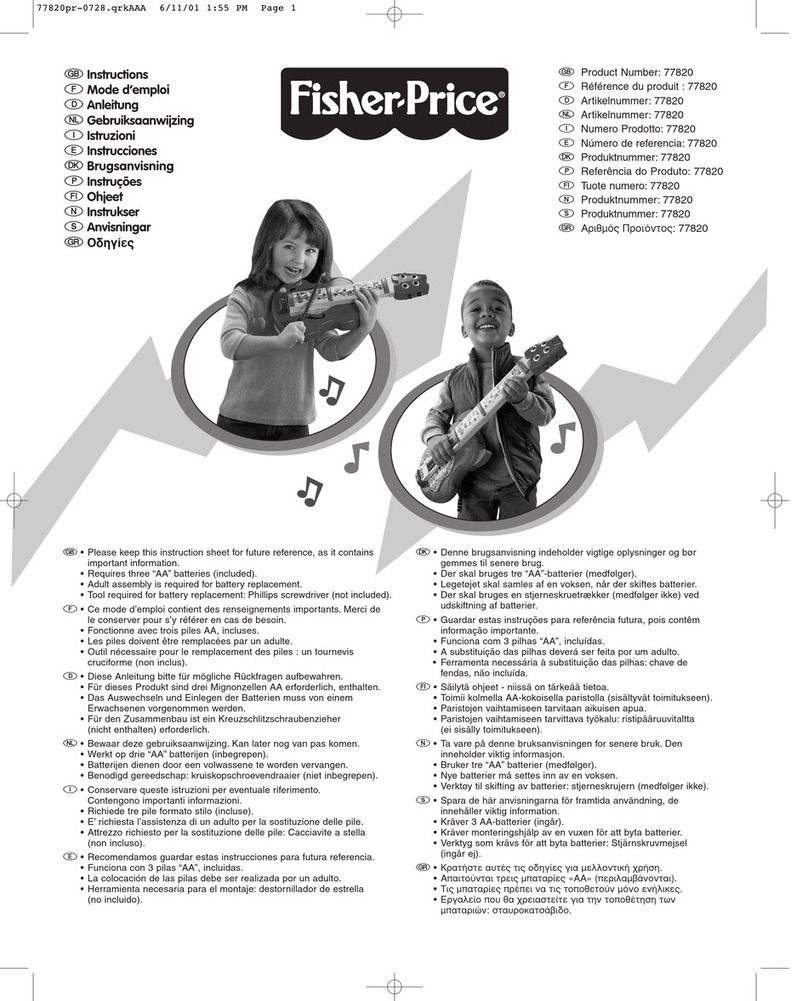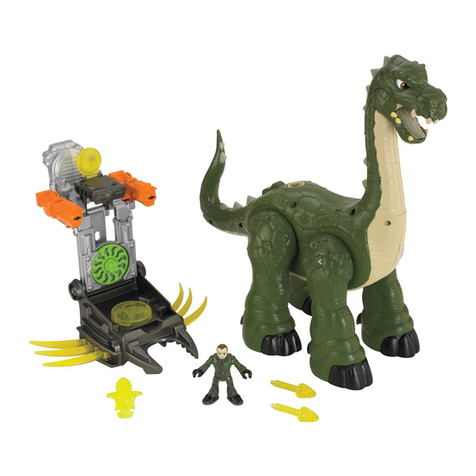www.seagullmodels.com
19
55mm.
To correct this, move the battery and receiver
forward orif this is not possible, stick weight
ontothe firewall.When balanced correctly, the
airplane should sit level or slightly nose down
when you lift it up with your fingers.
2) If the nose of the plane falls, the plane
is nose heavy. To correct this first move the
battery pack further back in the fuselage. If
this is not possible or does not correct it, stick
small amounts of lead weight on the fuselage
sides under the horizontal stabilizer. If the tail
of the plane falls, the plane is tail heavy.
1) It is critical that your airplane be bal-
anced correctly. Improper balance will cause
yourplaneto lose controlandcrash. The cen-
ter of gravity is locate 55mm back from the
leading edge of the wing, measured at wing
tip.
BALANCING.
Bolt the wing to fuselage.See pictures below.
ATTACHMENT WING - FUSELAGE.
Wing bolt.
4) By moving the position of the adjust-
able control horn out from the control surface,
you will decrease the amount of throw of that
control surface. Moving the adjustable con-
trol horn toward the control surface will in-
crease the amount of throw.
FLIGHT PREPARATION.
A) Check the operation and direction of
the elevator, rudder, ailerons and throttle.
C) Check the elevator first. Pull back on
theelevator stick. The elevator halves should
move up. If it they do not, flip the servo re-
versing switch on your transmitter to change
the direction.
Do not use the aerobatic settings for
initialtest flying or sport flying.
B) Plug in your radio system per the
manufacturer's instructions and turn every-
thingon.
1) We highly recommend setting up the
CAP 232 using the control throws listed at
right. We have listed control throws for both
Low Rate (initial test flying/sport flying) and
High Rate (aerobatic flying).
3) When the elevator, rudder and aileron
control surfaces are centered, use a ruler and
check the amount of the control throw in each
surface. The control throws should be
measured at the widest point of each sur-
face!
2) Turn onthe radiosystem, andwith the
trim tabs on the transmitter in neutral, center
the control surfaces by making adjustments
totheclevisesor adjustable servoconnectors.
The servo arms should be centered also.
CONTROL THROWS.
E)Check thethrottle. Moving thethrottle
stick forward should open the carburetor bar-
rel. Ifitdoesnot,fliptheservoreversingswitch
on your transmitter to change the direction.
D) Check the rudder. Looking from be-
hindthe airplane, move the rudder stick to the
right. Theruddershould move totheright. If it
does not, flip the servo reversing switch on
your transmitter to change the direction.




















